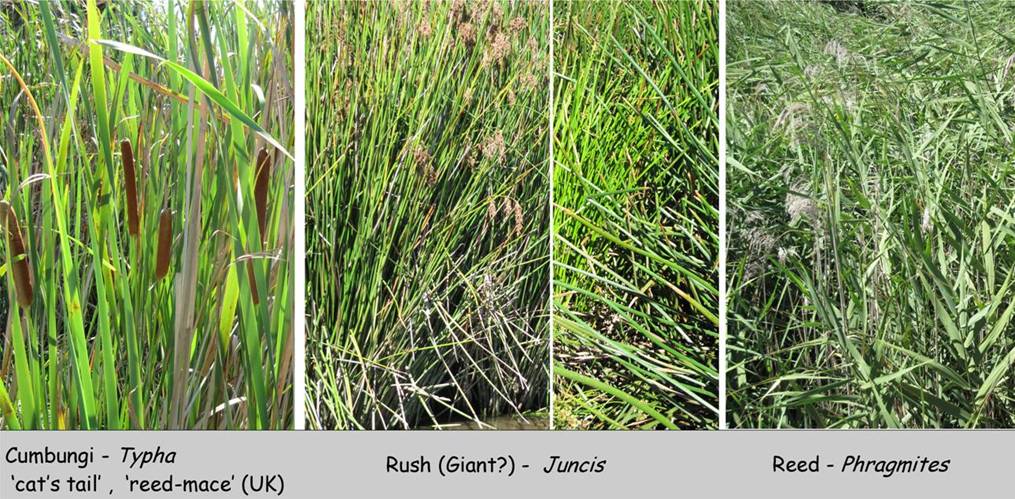Personally, I don’t mind if people refer to any tall green
sort of grassy stuff growing in water as ‘reeds’. However, as someone
asked me, my understanding, open to correction,
is :

Typha (particularly) and reed (along the creek) are both
common enough at Jerra Wetlands, but locally Juncis seems to occur mainly where
it has been planted, such as at Norgrove where it is rampant, almost
frighteningly so. From the height there, well over 2m in places, I think
it might be the ‘Giant’ species, or perhaps a cultivar.
A particularly ambulatory term is ‘bulrush’. When they
found Moses in it, it might or might not have been papyrus, but it means
something else in the UK, and in North America it often refers to Typha, a
usage followed by some Australians.
There is a line in The Man from Snowy River:
‘where around the Overflow the reedbeds sweep and sway to the
breezes ...’ I have sometimes wondered whether Banjo
Paterson’s image was of Typha or Phragmites. It would help to know where
‘the Overflow’ was. Some say it was (at least in Clancy of the Overflow)
a property in western NSW, perhaps on the Macquarie, others that it was a
frequently dry lake in the Bogan system near Nyngan. Both kinds of
stuff occur in the general area, but according to Mr Cunningham it is
Phragmites australis that forms extensive ‘almost impenetrable’ communities in
low-lying areas of the Macquarie and the Lachlan-Murrumbidgee. Furthermore
it is a characteristic of reed that it ‘sweeps and sways’ and the image does
not fit a camp of stockmen telling yarns against a background of moonlit clumps
of erect and rigid cumbungi.

